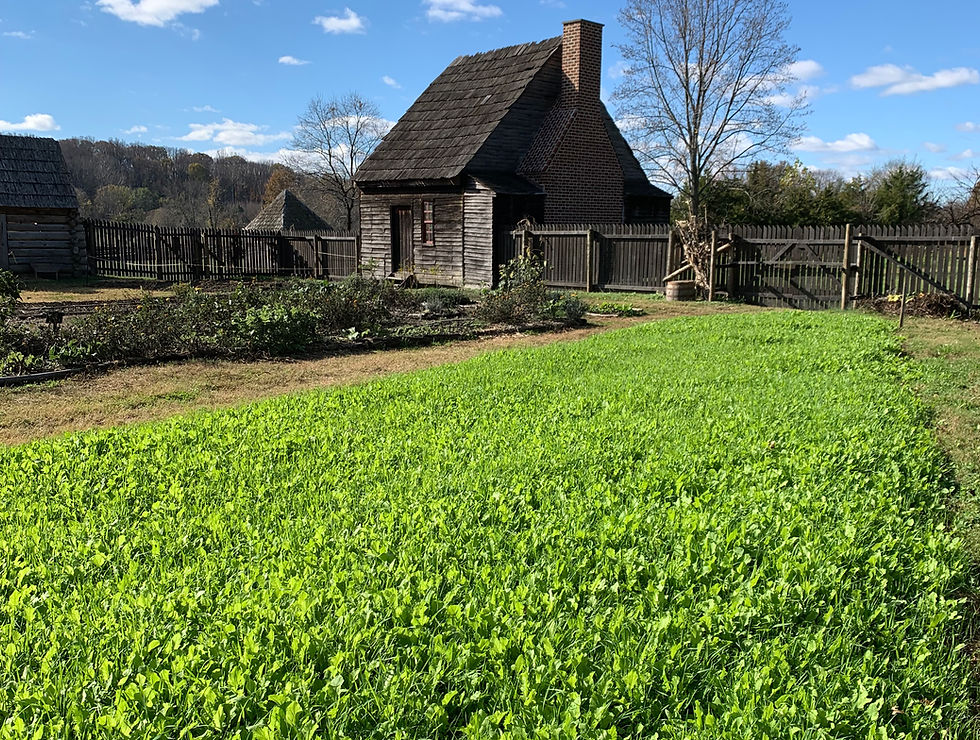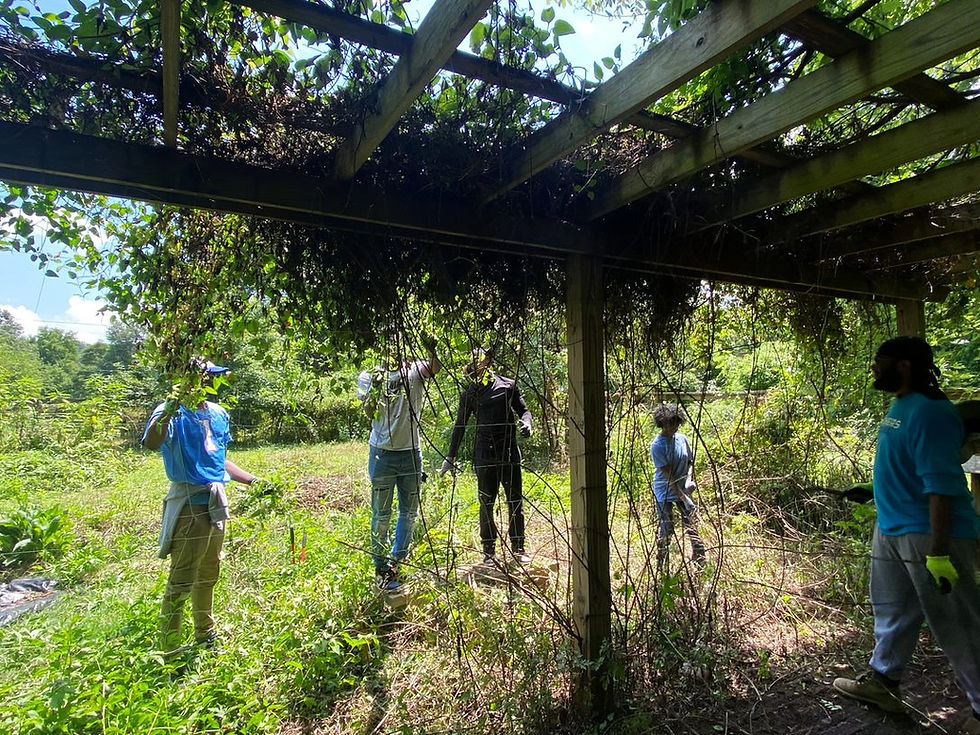Field Notes: Volume 16, Number 2
- abarnes86
- May 13, 2011
- 4 min read

This Week’s Harvest
Dill
Scallions
Pak Choi
Turnips
Radishes
Strawberries
Summer squash
We ask that our SHAREholders please keep in mind that spring harvests are often “light.” This is a result of small growing space and the earliness of the season.
As the season progresses, summer and fall should bring with them heavier boxes.
The staff at the Ecosystem Farm has pushed this week to get seeds and transplants into the ground, sowing beans and cucumbers, peppers and eggplant, tomatoes and summer squash, before the rains return. Last week, we spoke of finding the perfect planting window in between the rainfall. This week, the same holds true. We have also begun to look for the perfect planting space among other in-the-ground crops, seeding radishes in between rows of scallions in an effort to make creative use of the little dry space we have here.
But amidst the rush of planting, the staff has taken some time out to learn. After all, the Ecosystem Farm is not just a place of fruit and vegetable production, but a teaching model for sustainable agriculture and the future of farming.
While Jose attended an on-site workshop on the federal nutrition benefit programs available at farmers markets, Colette and Courtney traveled to The Farm at Sunnyside in Washington, Virginia, as part of the Chesapeake CRAFT (Collaborative Regional Alliance for Farmer Training) program. The CRAFT program is meant to coordinate and facilitate learning opportunities for farm apprentices, interns, and workers through farm visits, classes, and informal potlucks; Chesapeake CRAFT consists of visits to farms and farm projects in Maryland and Virginia that emphasize successful ecological approaches to agriculture.
The field trips that are taken through programs like this one allow farmers to witness firsthand the ins and outs of a working farm and to meet other growers from the region. It is during farm tours and networking sessions like these where ideas are discussed, plans are made, and exciting things begin to happen. Indeed, we take time out of our production schedule in order to learn, and we often learn how to become better producers. Those whom we meet along the way are honest and open about what does and doesn’t work, and willing to answer our questions. We come together with the deep, collective feeling of wanting this field to succeed.
Up Close with Pak Choi
This week’s harvest includes pak choi, often called Chinese cabbage. Grown for its tender white stalks and dark green leaves, pak choi is a member of the mustard family (Brassicaceae) that is native to eastern Asia. Relatives of the cool-season vegetable include cabbage, broccoli, kohlrabi, and turnips, all of which are also grown on the Ecosystem Farm.
The Cantonese name “pak choi” (in Mandarin, “pe-tsai” or “pei tsai”) means “white vegetable.” Both the stalks and the leaves are staple ingredients in Chinese cooking. The stalks can be stir-fried, and the leaves are delicious when prepared like other greens. Pak choi can be blanched and frozen to add to soups and stews.
Below, photos from this week at the Ecosystem Farm. Click images to enlarge, or view them on Flickr.
This Week’s Recipe: Stir-Fried Greens with Garlic
Recipe from Pete’s Greens
Ingredients:
1 head pak choi, roughly chopped with bottom end removed
1 bunch kale, radish, turnip, or other tender greens chopped into 2″ pieces
3 tablespoons cooking oil, such as sunflower or peanut
4 garlic scapes chopped fine, or 4 cloves garlic minced
1/4 teaspoon salt
1/4 teaspoon dried red pepper flakes, optional
Directions:
Wash greens and spin dry, or wrap in towel to blot excess moisture. Heat oil in a large heavy-bottomed skillet or wok over medium-high heat until hot but not smoking. Add garlic and salt, and saute about 1 minute. Add greens and red pepper flakes, if using, and toss to coat well. Increase the heat slightly and continue to toss the greens while they cook. Cook just until the leaves begin to wilt. Remove from heat, adjust seasonings, and serve.
Upcoming Events
Presentation: Greening Your Home: Tuesday, May 17, 2011, 6:30 to 8 p.m.: Did you know that installing a programmable thermostat can save you 10 percent on your annual energy bill? Or that planting a shade tree in the proper location can reduce your summer electric bill and increase your home’s value? This presentation will address 30 different strategies for greening your home that will save you money, improve your comfort, and protect the environment. We will discuss changes and improvements that can be made for all budgets, from simple D.I.Y. projects to more complex renovations.
Sprouts: Thursday, May 19, 2011, 11 a.m. to Noon: It’s never too early to get out and garden! Sprouts is a garden-themed educational program geared toward preschoolers. This one-hour, once-a-month program will spotlight fruit, vegetables, and other parts of a backyard garden, and will feature fun activities for parents and children to do together, from singing songs and reading stories to making crafts and playing games. This month, we will learn about rain and water.
Organic Gardening Workshop: Soil and Compost: Saturday, May 21, 2011, 10 a.m. to 12:30 p.m.: Improve your garden’s health from the bottom up! This course—part of our season-long Organic Gardening Workshop Series geared toward backyard gardeners—will provide you with the information needed to build your soil fertility. We will discuss how to test and improve your soil, how to construct a backyard compost pile, and how to feed the plants that will soon feed you. We will also discuss how to compost with worms.
Monthly Foodways: Where’s the Beef?: Saturday, May 21, 2011, Noon to 1 p.m.: Join us for a kitchen table conversation as we introduce you to the epicurean delights of colonial Marylanders. Learn how our tastes and the food itself have changed over 300 years as we explore the “receipts” (recipes) and meal preparation for everything from peas and pottage to food traditions for which Maryland is known. This month’s theme is “Where’s the Beef?” featuring Curing beef, a pretty dish of a breast of venison, a visit from our friends at the National Museum of the American Indian who will present some of their Nation’s culinary traditions, and Muskrat Love!







